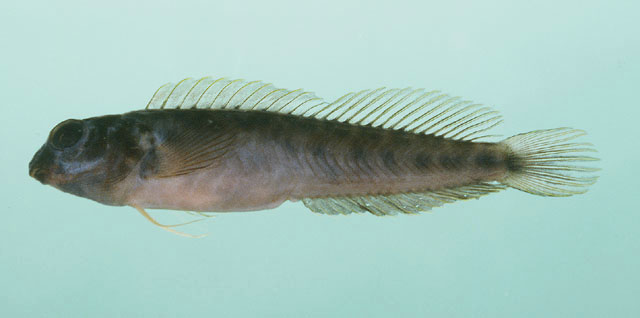| Blenniidae (Combtooth blennies), subfamily: Blenniinae |
| 4.6 cm SL (male/unsexed) |
|
benthopelagic; brackish; marine; depth range 0 - 3 m |
| Western Pacific: Gulf of Thailand to Papua New Guinea, north to Ryukyu Islands, south to New Caledonia; Belau to Pohnpei in Micronesia. Reported from freshwater in New Caledonia (Ref. 13235). |
|
Dorsal spines (total): 12-12; Dorsal soft rays (total): 15-17; Anal spines: 2-2; Anal soft rays: 17-19. In life, it is dark brown with black blotches on the sides and black bars on the head, and clear fins (Ref. 1602). |
| A rare species, living among the roots of mangrove trees (Ref. 559). Also found in estuaries and stream mouths (Ref. 90102). Oviparous. Eggs are demersal and adhesive (Ref. 205), and are attached to the substrate via a filamentous, adhesive pad or pedestal (Ref. 94114). Larvae are planktonic, often found in shallow, coastal waters (Ref. 94114). |
|
Least Concern (LC); Date assessed: 08 February 2020 Ref. (130435)
|
| harmless |
Source and more info: www.fishbase.org. For personal, classroom, and other internal use only. Not for publication.

